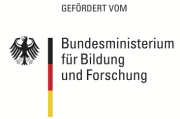Challenge
The German Emergency Medical Services (EMS) is an internationally accepted system in pre-hospital medical care and is an integrated part of general public services in Germany.
It has been proved that it is difficult to obtain fast and professional help in regions with low population densities with poorly developed medical infrastructure. EMS care in these areas is mainly provided by land-based rescue vehicles with occasional support by rescue helicopters, which are mainly used as fast vehicles for emergency physicians or patient transport. Area-wide medical care requires a high number of ambulance stations causing high costs per operation, due to low frequency and thereby resulting idle standby time. As a result, the number of stations will be reduced, which causes worse emergency medical care. At the same time, however, there exist overlapping operational areas, which cannot be changed by planning and are therefore financed by multiple organizations. Shifting EMS to air ambulance services might diminish both problems.
Aim of the project
The project aim is the development and demonstration of a model for the innovative design of EMS in sparsely populated, structurally weak large-area regions. An airborne EMS generates the basis of this model. Thus, emergency medical care can be ensured in a time frame that is oriented toward emergency medical demands. In addition, effectiveness and efficiency can be optimized.



